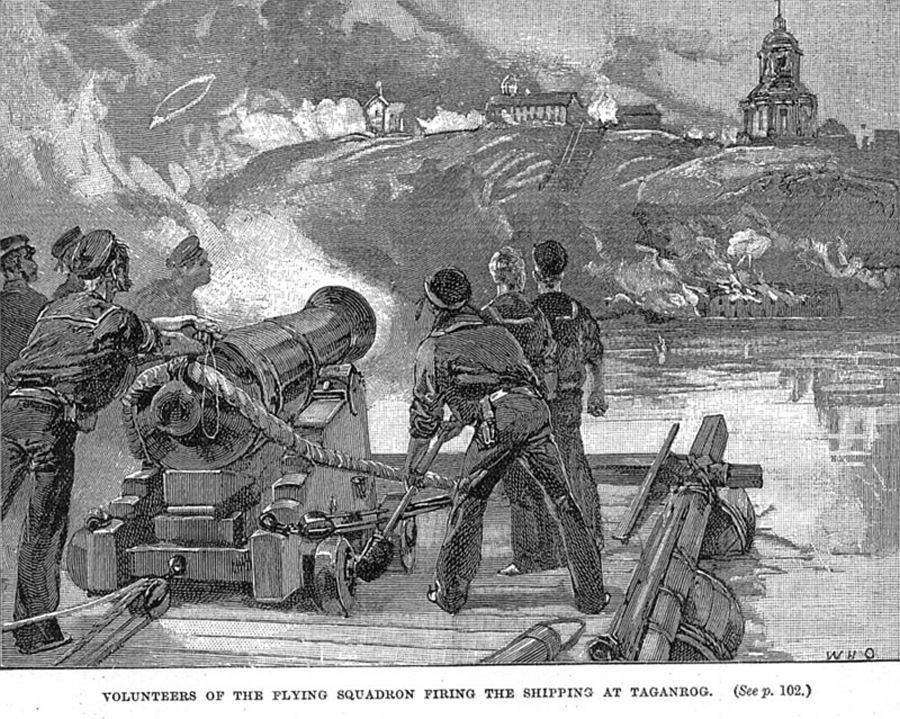Pre-battle tensions
Conflict over the Holy Land
The chain of events leading to France's and Britain's declaring war on Russia on 27 March and 28 March 1854 can be traced to the coup d'état of 1851 in France. Napoleon III had his ambassador go to the Ottoman Empire to force the Ottomans to recognize France as the "sovereign authority" in the Holy Land.
Russia disputed this newest change in "authority" in the Holy Land. Pointing to two more treaties, one in 1757 and the other in 1774, the Ottomans reversed their earlier decision, renouncing the French treaty and insisting that Russia was the protector of the Orthodox Christians in the Ottoman Empire.
Napoleon III responded with a show of force, sending the ship of the line Charlemagne to the Black Sea, a violation of the London Straits Convention.
France's show of force, combined with aggressive diplomacy and money, induced Sultan Abdülmecid I to accept a new treaty, confirming France and the Roman Catholic Church as the supreme Christian authority in the Holy Land with control over the Christian holy places and possession of the keys to the Church of the Nativity, previously held by the Greek Orthodox Church.
Tsar Nicholas I then deployed his 4th and 5th Army Corps along the River Danube, and had Count Karl Nesselrode, his foreign minister, undertake talks with the Ottomans. Nesselrode confided to Sir George Hamilton Seymour, the British ambassador in St. Petersburg, the dispute over the holy places had assumed a new character - that the acts of injustice towards the Greek church which it had been desired to prevent had been perpetrated and consequently that now the object must be to find a remedy for these wrongs. The success of French negotiations at Constantinople was to be ascribed solely to intrigue and violence - violence which had been supposed to be the ultima ratio of kings, being, it had been seen, the means which the present ruler of France was in the habit of employing in the first instance.
As conflict loomed over the question of the holy places, Nicholas I and Nesselrode began a diplomatic offensive which they hoped would prevent either Britain's or France's interfering in any conflict between Russia and the Ottomans, as well as to prevent their allying together.
Nicholas began courting Britain through Seymour. Nicholas insisted that he no longer wished to expand Imperial Russia, but that he had an obligation to Christian communities in the Ottoman Empire.
The Tsar next dispatched a diplomat, Prince Menshikov, on a special mission to the Ottoman Sublime Porte. By previous treaties, the Sultan was committed "to protect the Christian religion and its churches". Menshikov attempted to negotiate a new treaty, under which Russia would be allowed to interfere whenever it deemed the Sultan's protection inadequate. Further, this new synod, a religious convention, would allow Russia to control the Orthodox Church's hierarchy in the Ottoman Empire. Menshikov arrived at Constantinople on 16 February 1853 on the steam-powered warship Gromovnik.
Menshikov broke protocol at the Porte when, at his first meeting with the Sultan, he condemned the Ottomans' concessions to the French. Menshikov also began demanding the replacement of highly-placed Ottoman civil servants.
The British embassy at Constantinople at the time was being run by Hugh Rose, chargé d'affaires for the British. Using his considerable resources within the Ottoman Empire, Rose gathered intelligence on Russian troop movements along the Danube frontier, and became concerned about the extent of Menshikov's mission to the Porte. Rose, using his authority as the British representative to the Ottomans, ordered a British squadron of warships to depart early for an eastern Mediterranean cruise and head for Constantinople.
However, Rose's actions were not backed up by Whitley Dundas, the British admiral in command of the squadron, who resented the diplomat for believing he could interfere in the Admiralty's business. Within a week, Rose's actions were cancelled. Only the French sent a naval task force to support the Ottomans.































































